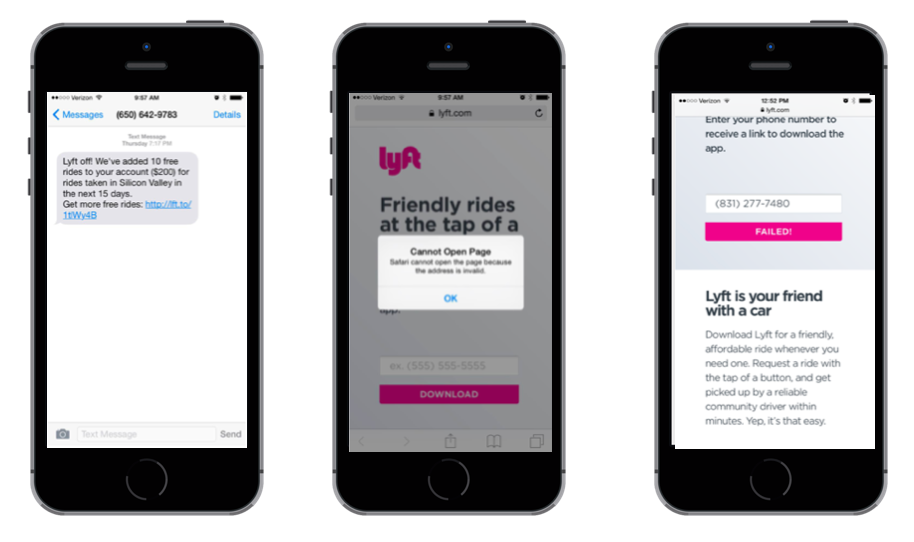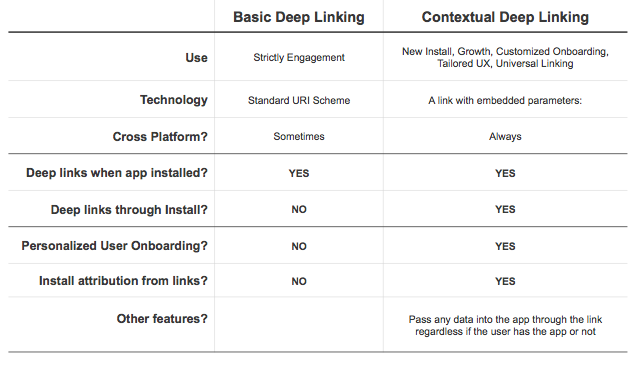What’s the difference between “I’m sorry” and “my bad?” Not much, unless you’re saying it to someone at a funeral. Context matters, and it’s true for deep linking, where context can be a game changer for everything from UX and analytics to growth and user retention.
Before we explain what we mean by context, we have to take a step back. It’s clear that basic deep linking is table stakes for growth on mobile. Most of the big players are already doing it, and if they aren’t, they will be soon. A few of them are even doing it well—Airbnb, Lyft, and Yelp come to mind.
But there’s a problem with basic deep linking. It’s caused some to label the method a failed promise, and it’s caused by the black boxes that we call app stores.
Click a deep link, and you’ll go from wherever you found the link (be it Facebook, email, SMS, whatever) straight to the content that the deep link wants you to see. Whoever made the link gets a bunch of useful data about what just happened, and you get to move seamlessly between apps that, before deep linking, functioned as walled gardens. Everyone wins.
But it only works if you have the app installed. If you don’t, you’re sent to a download page, you download the app, and to get to the content you wanted, you have to go back, find the link, and try again. It’s frustrating, and in a world where over 60% of mobile app users drop off less than 24 hours after download, developers can’t really afford frustrating UX.
When the deep link fails, those developers lose data, too. Enter the app store, and it strips all of the information attached to your deep link. No one wins.
Enter contextual deep linking, a method that helps pass data around the app store’s wall. It solves basic deep linking’s biggest problem. Imagine you’re competing with Eventbrite. You implement contextual deep linking. Your deep link is deferred through the install process. Now, your onboarding process is way, way smoother than theirs—and you also know more about your new users. You retain more users (because, after all, one click is better than three or four), you grow faster, you IPO, you’re king of the world.
Do you know who does contextual deep links better than anyone else? We’ll give you one guess.
Branch links work on SMS, email, web, and social. They move users to content seamlessly. They give developers more information about users, and power our growth tools like referral programs and content sharing. Contextual deep links are the business, and no one does them like Branch.
























